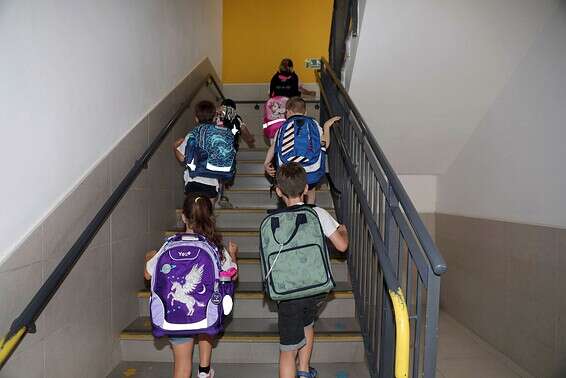According to the OECD report, more money is invested in students in Israel, but classrooms suffer from overcrowding and achievement is low accordingly • High academic percentage among teachers
Israel is more educated than OECD countries.
Students at Tel Aviv University, in 2018
Photo:
Joshua Joseph
The education system in Israel leads in a number of areas across the OECD member countries, such as in the field of higher education, but it still seems that the list of gaps in relation to those countries is large, for example in the area of crowded classrooms.
This was published today (Tuesday) in an OECD report.
According to the Education At A Glance report for 20202, which covers 38 education systems in OECD member countries, the Israeli student learns more - but understands less. Crowded classrooms, low teacher salaries and multiple (not sure if they are effective) teaching hours Still the main problems of the education system in Israel.
The percentage of educated people in Israel with post-secondary and academic degrees is significantly higher than that of the OECD (in Israel it stands at 50.2%, in the OECD at 38%).
Women in Israel are also more educated than women in the organization (57.3% in Israel, 51.3% in the OECD).
However, it must be said that in the last three years, Israel's status in this category has diminished.
In addition, Israel is one of the few countries where the Compulsory Education Law begins at age 3, so the proportion of children who receive education from kindergarten is very high compared to other countries.
Back to school September 2020 // Photo: Yoni Rickner, Moshe Ben Simhon, Paz Bar, Newsenders
But it seems that the list of gaps in relation to the OECD is large: for example, the classrooms in Israel are more crowded.
The average number of students in a primary school class in Israel is 26.4, compared to the OECD where the average is 21.1 students in a class.
The difference is also relatively large in middle schools: in Israel it stands at 28.2 students per class, compared to the OECD, where the figure stands at 23.3 students per class.
The report also states that a student in Israel studies more than a student in the OECD, but this does not lead to better achievements. The elementary student in Israel studies 154 hours more per year than the average student in the OECD (Israel - 958 hours, OECD - 804 hours). Middle school students in Israel study more, with a difference of an additional 62 hours (Israel - 984 hours per year, OECD - 922 hours per year). .
Thus, Israel's average score in literacy is 470 points compared to 487 points in the OECD average.
In math literacy, Israel's average score is 463 points, compared to 489 points in the OECD average.
In science literacy, Israel's average score is 462 points, compared to 489 points in the OECD average.
The data in the report refer mostly to the year 2019, and the other part refers to the years 2018 or 2017. The report reviews a number of areas.
As for teachers, it seems that teaching is still a profession dominated in Israel by women.
In addition, teachers in Israel earn less than teachers in the OECD.
On the other hand, in management positions the proportion of men is higher.
Another part of the report relates to national expenditure on education. During the years 2017-2012, Israel's expenditure on education was the highest - 4.4% per year compared to the OECD average, which stands at 1.6% per year. In addition, expenditure per student in Israel is higher than this. However, this is due to the high number of students in Israel, which requires the provision of classes and study hours. It should be remembered that in Israel the gaps are still larger, the level of education is lower and many more resources and funds are needed for the education system.















